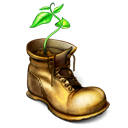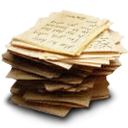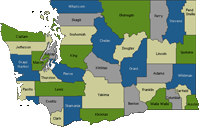Genealogy Defined
Genealogy is the science of identifying, classifying, and organizing facts pertaining to the history and descent of a person, family or group, from an ancestor(s) in their natural order of succession.
Climbing Your Family Tree
 It is an interesting and fascinating experience to search out your ancestors and see in their lives the heritage and reflections of your past. Piecing together a family history back though time to eight or twelve generations offers the best review of American history one may undertake.
It is an interesting and fascinating experience to search out your ancestors and see in their lives the heritage and reflections of your past. Piecing together a family history back though time to eight or twelve generations offers the best review of American history one may undertake.
The best way to gather your genealogy is to begin with yourself and your family...
Starting Process
Start with Yourself ~ Use your full name, date of birth and other important dates. Use full names and dates for your parents; remember to use maiden names for your females.

There is an accepted genealogical style for writing your names and dates on charts. Surnames are written in capitals, followed by the first name, then the middle name. Example: WILDER, Franklin Earl. Enclose nicknames in parenthesis.
Always use the female's maiden name, never her married name. You will avoid a lot of confusion if you adhere strickly to this rule.
Dates are recorded with the day first followed by the month, then the year in full. Example: 20 Jan 1921. Never use numbers to indicate months.
One step at a time ~ Prove facts as you go; do not skip generations. You can't prove that WILDER, Franklin Earl was your great-grandfather unless you can first show proof that your grandfather was his son.

Pencil or Pen ~ Both are needed. keep unproven records in pencil so they can be changed.
Family can help ~ Visit, write or phone living family members. Ask questions.
- When using the mail, do not forget to send a self addressed stamped envelope when inquiries on an ancestor.
- Note: A #9 envelope will fit inside a standard #10 envelope, without folding it.
- Email is today's fastest form of communication.
- Very Important: Take notes on everything you are told.
Personal Interview
 Time is of the essence and those older living kinfolk may give you information that you cannot find elsewhere.
Time is of the essence and those older living kinfolk may give you information that you cannot find elsewhere.
Don't wait too long to record your new data - keep your notes for clues and reference.
Three important questions:
- Is there another relative searching your family?
- What family member or friend would have more information than the one you are writing or talking to?
- Does any branch of the family have a Bible, newspaper clippings, journals, diaries, scrapbooks or pictures you may want to have reproduced?
How-To Proceed
 Organize your records ~ Find a system that works for you.
Organize your records ~ Find a system that works for you.
There are many ideas and forms to help with record keeping. The primary tools for organizing and recording your data are the PEDIGREE CHART and the FAMILY RECORD SHEET.
Below are some common abbreviations found on all charts.
Use lower case letters on the abbreviations.
b=date of birth | bp=place of birth | m=date of marriage | pm=place of marriage | d=date of death | pd=place of death
Fill out one family record sheet for each family represented on your lineage chart. List all the children in the order of their birth.
Another tool that might help you is a timeline. They can help you detect trends, determine patterns, and analyze family information. Create a timeline for your ancestor - birth to death, adding life events in chronolgical order.
Resources ~ When family information seems to run dry, then begin exploring official county records, library collections, archives, historical or genealogical societies and consult one or more of the many good books on genealogy.
- Get to know your local libraries. Learn to use inter-library loans for material not in your local library.
- Visit historical societies, Church of Latter Day Saints family search center.
- Access the Internet. Example: Sanborn Fire Insurance Maps
Cite your sources ~
- You must record where you obtained your information.
Throughout your search, don't give up on finding the information, for it is the expierence of most genealogists that records do exist somewhere.

 Queries
Queries